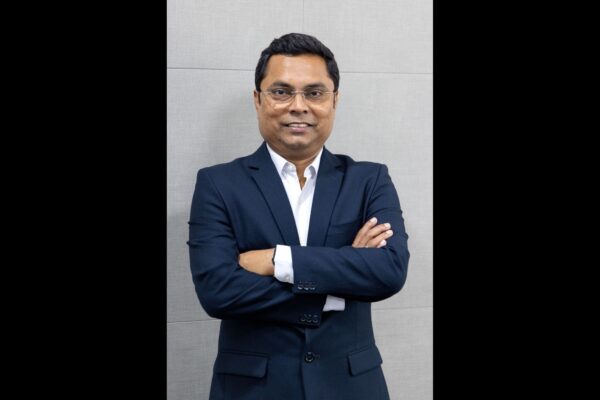Bentley sees continued digital advancements in infrastructure in the Asian market
At Bentley's 2023 Year in Infrastructure event in Singapore, DUSTIN PARKMAN, vice president of transportation at Bentley Systems, highlighted their focus on Asian countries and the rise of digital twins during an interaction with Tejasvi Sharma, Editor-in-Chief of EPC World." During the discussion, OANA CRISAN, product marketing manager at Bentley Systems, shared insights into diverse digital solutions customized for specific market segments
What is your perspective on the adoption of technology in Asian countries? Have you noticed any significant advancements in this regard over the past few decades?
We have witnessed remarkable technological advancements within Asia, especially in major urban centers experiencing significant urbanization. The influx of people into urban centers constrains the existing transportation network and the other surrounding infrastructure. The growth of cities is one of the reasons why we are witnessing the proliferation of megaprojects in Asia. Digitization of these megaprojects are at par with the best projects in the world.
You've been attending this event for several years now, and you've observed the growing number of submissions originating from Asia. The distribution seems to be shifting – while there was once an abundance of submissions from China, we are now seeing more from India. We even had a finalist from Jakarta. This year, we have multiple finalists from Singapore. The majority of new infrastructure projects are currently being developed in Asia. Therefore, it's only natural to anticipate that as organizations embark on new ventures, there will be ample opportunities to innovate and diverge from the traditional mould.
It appears that all your resources are being consolidated into a single digital solution – digital twins. With everything integrated in it, do you believe this will become your preferred solution?
This is not the only digital solution we offer. We will continue to offer various digital solutions tailored to specific market segments. However, our aim is to establish digital twins as the fundamental backbone for data management. In infrastructure, numerous related products coexist – those existing presently, and those we will develop in the future, all contributing to the digital twin concept.
Let me illustrate a practical scenario. Imagine a structural engineer working independently, dedicating his focus to structural designs. He logs onto his preferred design software, whether it is developed by Bentley or another company. However, when this engineer is involved in a larger project, such as designing a bridge or abutment, they become interconnected with all project stakeholders. In such complex projects involving various engineering, construction, and supplier entities exchanging information, utilizing a digital twin platform becomes the ideal solution for seamless data integration and collaboration.
The concept of the infrastructure cloud represents a natural evolution of our existing multiple cloud platforms. Initially, we developed three distinct platforms: ProjectWise, SYNCHRO, and AssetWise, each tailored for specific purposes. ProjectWise focuses on engineering and managing engineering data, SYNCHRO caters to construction needs, and AssetWise serves owner-operators for operations, maintenance, and asset handovers. However, we recognized an opportunity to streamline and unify these platforms, which were previously segmented and separated by distinct workflows. We are witnessing a breakdown of barriers between these platforms, not only due to the imperative need for communication and collaboration, but also due to contractual shifts, with construction manager/general contractor programs and design-build projects becoming more prevalent. As a result, our goal is to seamlessly integrate these platforms, ensuring that data flows effortlessly regardless of whether you are part of an engineering firm, you are a construction contractor, or you are an owner-operator. Ultimately, our objective is to consolidate these three platforms into a cohesive system, providing users with a seamless experience. Several ongoing projects are already leveraging these functionalities to their advantage.
How have your solutions benefited transportation projects?
From maintaining metro systems to constructing new roads, the benefits of digital twins have been evident across various modes of transportation. Over the years, intriguing policy initiatives have aimed at establishing a national digital twin and consolidating all relevant information. Singapore stands out as a pioneer in successfully implementing this approach, particularly evident in transportation and building authorities. Collaborating with Surbana Jurong, Singapore has been instrumental in gathering and feeding data into the system. Their approach began with creating a foundational digital twin of the country, incorporating GIS data, satellite imagery, and mobility scanning data from rail and track lines. Subsequently, they integrated existing network information sourced from AssetWise Linear Analytics.
In 2019, we partnered with SMRT Corporation, who were using AssetWise Linear Analytics to enhance their maintenance work order program. Now, we are simply leveraging the data that they already possess on their road and rail networks, integrating it into our digital twin platform. Our applications empower users to seamlessly consolidate this data, creating an interactive platform for all stakeholders. iLab serves as an exemplary demonstration of the transformative potential inherent in harnessing this wealth of information.
How long did it take for Singapore to digitalize its transport network?
I believe it took a couple of years for Singapore, especially regarding the rail lines, to establish their maintenance procedures. They had to equip all their rail cars with instrumentation to receive real-time readings from the tracks. These readings, obtained on a daily basis, survey the track conditions. This data is fed into an analytics program offline, providing insights ranging from ballast movements to track conditions, and can even identify areas needing maintenance, potentially including grinding operations.
Which markets are you going to target in the next couple of years?
Overall, we see opportunities across all phases of the infrastructure lifecycle, from design through construction and operations. Many markets around the world continue to benefit from infrastructure investments, which is fueling the need for efficient project delivery, while operators need to ensure their assets are performing optimally.Whether in transportation, large facilities, water utilities, or energy, we aim to meet the need for infrastructure organizations, large and small, to go digital and leverage software to be able to do more with less in better ways.
What about the African markets?
The African markets present fascinating opportunities. We have been investing in educational initiatives across Africa, with a particular focus on South Africa, where we have identified numerous projects, especially the extensive transportation infrastructure development underway in the region.
Do you believe that the benefits of digital twins are significant in the long term?
In the end, it is the users who reap the benefits. We anticipate returns on investment for our users ranging from 10 to 100 times the cost. We are witnessing substantial enhancements in design, construction, and inspection efficiencies.









